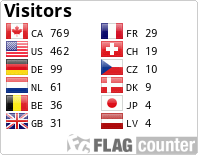They were named by the Banff Warden Service based on an interesting feature; two of the ponds have a greenish milky appearance. The inkpots are an odorless karst spring, which means that the landscape is significantly altered by solution. They emerge from the Sulphur Mountain formation that consists of dark grey silty shale, siltstone and shale. There are seven ponds that make up the Inkpots on the north bank of Johnston Creek.
Each pond has one or more spring outlets. The first inkpot has the smallest surface area and is approximately 3 metres in diameter. The water flowing into this hole is perfectly clear and has almost no air bubbles. The walls consist of bedrock.
All the remaining ponds are shallower but have larger surface areas. The banks of these consist of an alluvial material (silt, sand, gravel). Water and air bubbles, from one or more distinctive points at the bottom, emerge after traveling through a layer of sand. This process has created quicksand like conditions that cover a large portion of the Inkpots.You will notice concentric waves of sand and see air bubbles rising to the surface. This is most noticeable in the two most northerly ponds. These quicksand conditions can occur in areas where the underlying bedrock consists of carbonates (limestone, dolomite) and has only a thin cover of alluvial material. The rocks in this situation may have networks of solution channels (karst).
Back to the colouring of the water, the main reason can be attributed to the sand that is suspended in solution. As mentioned earlier, one of the ponds is clear because of the steady flow that carries away the small silt and sand grains. Other ponds, especially the two most northerly, have silt containing mainly quartz and feldspar that is stirred up continuously by the water and air coming through the bottom sediment. These fine particles, suspended all the time, give the water its milky appearance.
While in the area, take some time to enjoy the scenery, including Mount Ishbel. It is the triangular rocky peak that really dominates the easterly view. It is part of the Sawback Range that includes Mounts Louis, Cory, Edith and Norquay. It got its distinctive look due to a glacier that undercut it and caused a massive slide.
In order to log this EarthCache, please send me an email (through my geocaching profile, kindly do not post in your log) the answers to the following questions:
On the first line of the email, please include the text “GC1XQCJ - Inkpots EarthCache - Johnston Canyon"
1. What year did Parks Canada set out to restore this sensitive area
2. What is the sum of the number of ponds listed on the sign plus the average temperature of the springs
3. Photos at the Inkpots are always appreciated but no longer a requirement to log an EarthCache.
There is no need to wait for me to respond, please submit your answers and log at the same time. Posted logs that do not have the associated answers emailed within seven (7) days will be deleted. Please feel free to re-post once the answers have been sent.
Remember, there is no physical container to be found for an EarthCache site.
